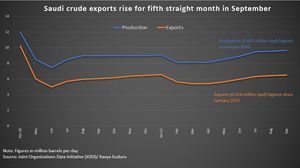Canada is taking significant steps to boost its military and logistical presence in the Arctic, responding to increasing geopolitical tensions and climate change ramifications. With the Arctic seen as the new frontier—a region rich with untapped resources and potential trade routes—the Canadian government is determined to assert its sovereignty over this vast and strategically important territory.
Brigadier General Daniel Rivière, who commands the Canadian Joint Task Force North, holds a round map centered on the Arctic, declaring, “The Northwest Passage is going to become a main artery of trade.” This recognition of the Arctic’s potential, especially as ice melts due to climate change, has prompted Canada to ramp up its military capabilities and diplomatic efforts. After decades of being perceived as glacial wasteland, the urgency to secure the Arctic has woken up national dialogues around security and resource management.
At the core of Canada's enhancement plan is the deployment of new military assets. This includes patrol ships, destroyers, icebreakers, and submarines specially equipped to operate under the polar ice caps. These technologies are not just necessary—they are absolutely fundamental to Canada’s interests. The government aims to improve its surveillance and operational capacity, ensuring it can respond swiftly to both emergencies and geopolitical developments within its jurisdiction.
On February 4, 2023, Quebec-based air carrier Nolinor announced it would be adding Kona cargo planes to its fleet by 2030. Designed by Natilus, these aircraft will significantly improve access to remote communities within the Arctic, offering fuel-efficient transportation options enough to meet the demands of growing northern shipping and support missions.
Given the Arctic region accounts for 40 percent of Canada’s land and 75 percent of its coastline, this military fortification requires not only assets but also boots on the ground. The Canadian Rangers, often referred to as the “eyes and ears of Canada,” play a pivotal role. These reservists, who patrol vast stretches of uninhabitable territory, have been instrumental since the Cold War, ensuring local knowledge and rapid local response capabilities.
According to Paul Skrypnyk, a member of the first patrol group of Canadian Rangers, “The Rangers represent for the Canadian army the possibility of having local reserve forces able to intervene quickly.” Their presence is invaluable, particularly as climate change enables greater navigability of the Northwest Passage, leading to increased traffic—including potential tourism—thereby necessitating improved response capabilities.
Challenges remain, as weather conditions have been described as unforgiving. Lasting impacts of extreme cold can pose significant threats to operations. Ranger Thomas Clarke noted, “Mother Nature is the biggest hostile threat” to Arctic missions, highlighting the need for rigorous training, drills, and preparedness to meet rapid response needs. To this end, military exercises are being heightened, ensuring troops are ready for potential emergencies.
Overall, Canada’s Arctic strategy is multifaceted, emphasizing not only military enhancements but also logistics improvements aimed at boosting accessibility. The combination of climate change, geopolitical competition, and technological advancements signals the necessity for Canada to prioritize its northern territories.
By investing significantly in its Arctic operation capabilities, Canada ensures it retains control over its valuable territory, responding to both immediate challenges and long-term strategic interests. The steps taken today are not just about fortifying defense—they are about securing the future of the Great North.



